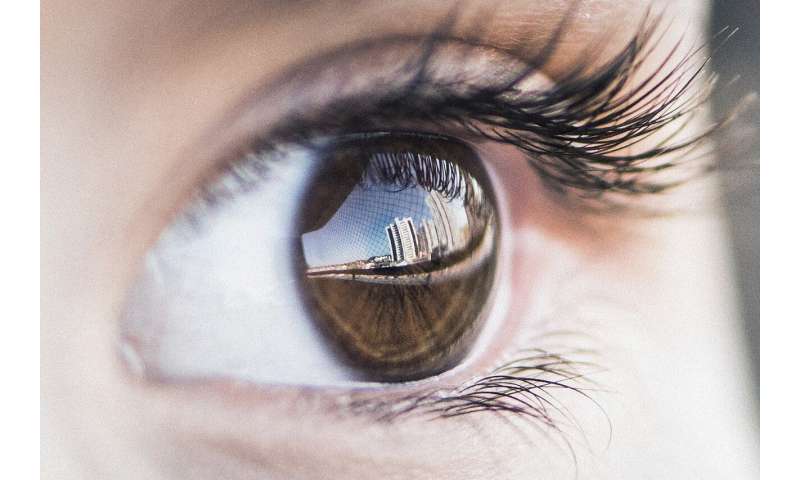

The digital revolution in ophthalmology, foreshadowed around two years ago, has now become a clinical reality: Since the middle of the year, MedUni Vienna and Vienna General Hospital have been using automatic digital retinal screening, without assistance from an ophthalmologist, to detect diabetic retinal disease. “The robot makes the diagnosis all on its own,” said Ursula Schmidt-Erfurth, head of the Department of Ophthalmology and Optometrics of the Medical University of Vienna, speaking today (Tuesday) at a press conference in Vienna in advance of the Advanced Retinal Therapy Conference “ART 2019” to be held in Vienna on 23 November, which will specifically focus on the use of Artificial Intelligence (AI) in ophthalmology.
“Worldwide, there are 420 million people with diabetes, but only around 15 percent of them go to their ophthalmologist in time to avoid permanent damage resulting in severe visual impairment,” explained Schmidt-Erfurth. “Globally, retinal damage is the commonest cause of irreversible visual impairment in people of working age. 75 percent of all diabetics suffer this type of damage in the long run.”
There is now a cost-effective and efficient AI solution to ensure early detection as part of routine general medical care: A robotic camera, no bigger than a coffee machine and costing around €20,000, is being used under the direction of MedUni Vienna’s eye hospital in the three diabetology departments of MedUni Vienna, the Rudolph Foundation and in Kaiser-Franz-Josef Hospital. It is able to diagnose within a matter of minutes whether diabetic patients already have retinal damage requiring treatment. “The presence of a doctor is not necessary for this screening. The patient sits in front of the camera and the results come out of the printer five minutes later,” said Schmidt-Erfurth, who heads up the Christian Doppler Laboratory for Artificial Intelligence in Ophthalmology. “The robot clearly states whether there is currently no damage, moderate damage or damage that requires urgent treatment and routes the patient directly to an ophthalmologist.”
All three of the devices being used in Vienna are part of a joint initiative between the Department of Ophthalmology and Optometrics and its international AI partners. The IDx-DR system that it uses was developed at the University of Iowa in the U.S. by a spin-off company and is the only approved, and therefore reliable, complete system in the world.
“With two million pixels or data points, it takes an extremely sharp image of the retina and the data are digitally transferred,” explains Andreas Pollreisz, retinal expert at MedUni Vienna. Based on the fundus photograph, the algorithm identifies anatomically relevant structures such as macula, optic nerve and blood vessels and finally examines the entire image for pathological diabetic changes. Characteristic features of diabetes are micro-aneurysms, i.e. tiny bulges on fine blood vessels; bleeds within the retinal layers; hard exudates, i.e. fatty deposits in the retina; or even retinal angiogenesis, which is a sign of diabetic retinopathy that is already at an advanced stage.
The IDx-DR system automatically determines the image quality within minutes, as well as the presence of any diabetic retinal changes. Around 5 percent of patients are found to have damage that is already significant, even though they do not have any symptoms. In the case of moderate findings (approximately 15 percent of asymptomatic diabetics) constant monitoring is necessary—and this is also determined by the robot.
No longer detectable to the naked eye
International studies have shown that Artificial Intelligence, with its precise algorithms, can diagnose more quickly and accurately than a consultant. Says Schmidt-Erfurth: “AI can analyze things that an expert cannot detect with the naked eye.” Nevertheless, there is a doctor at the end of the diagnostic chain: only a doctor can determine from the image what treatment is subsequently needed and perform the operation—on an individual basis in the spirit of precision medicine. At the same time, all positive results, and those that were inconclusive—for example, because of obstructing cataracts—are scientifically checked in MedUni Vienna’s Vienna Reading Center.
“In cases of doubt, the robot will opt for a false positive result, so that the patient goes to the ophthalmologist and is assured of receiving a reliable diagnosis. From among the first 450 patients that were screened by IDx-DR, we only identified a single case where a doctor could have given a more accurate diagnosis than the computer. In the other 449 cases, IDx-DR was correct or meticulous in its diagnosis” explains Bianca Gerendas. “This new technique not only relieves the burden on doctors during the initial steps but, above all, ensures that thousands of diabetics no longer go untreated,” stresses Schmidt-Erfurth. “Because, when it comes to retinal damage, early detection is crucial.”
Source: Read Full Article